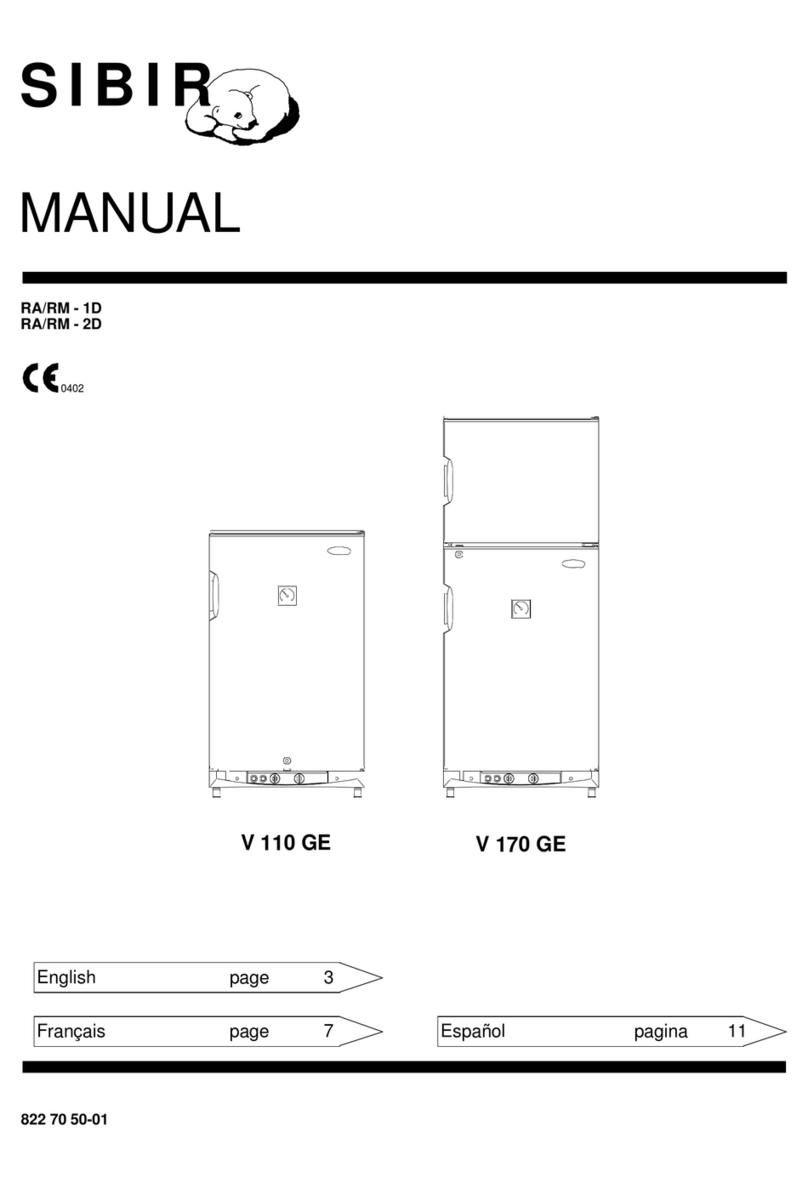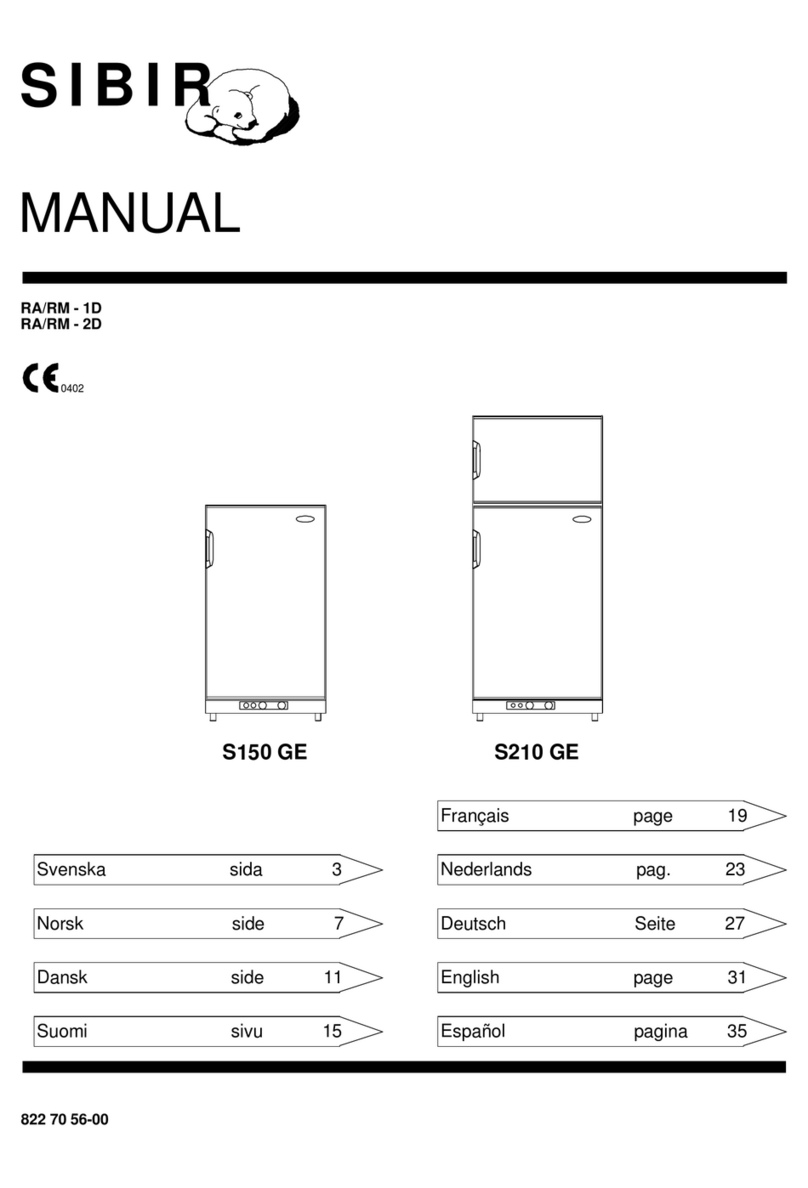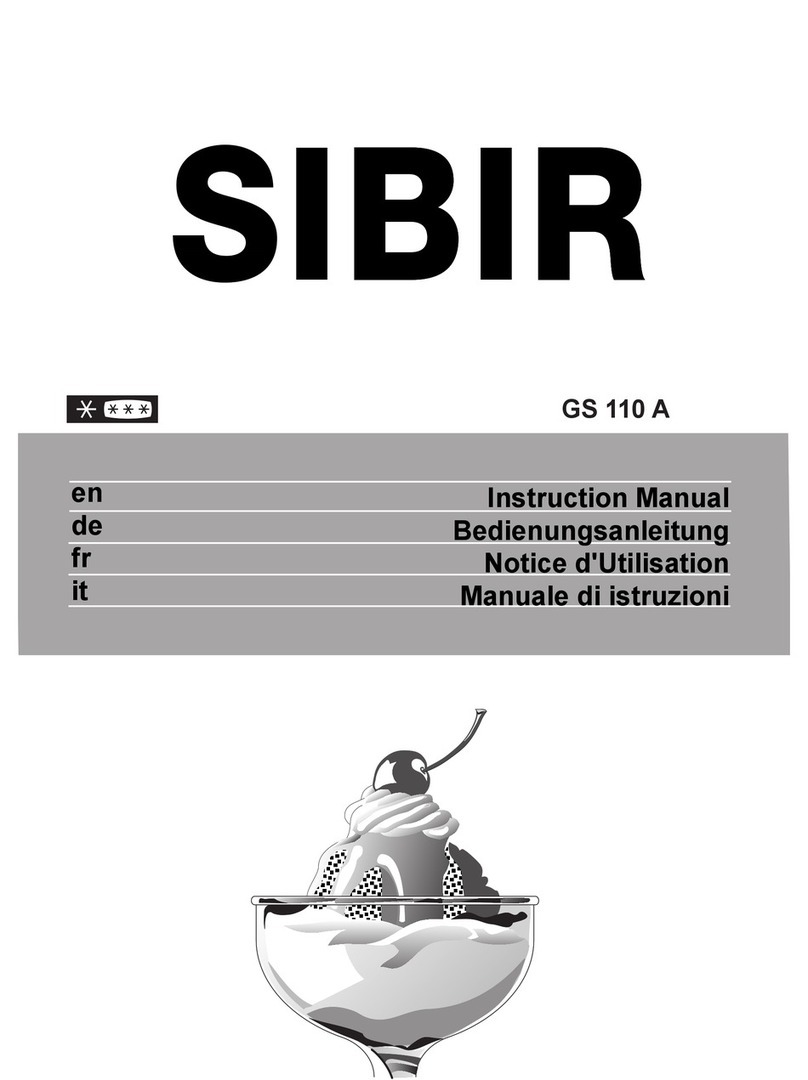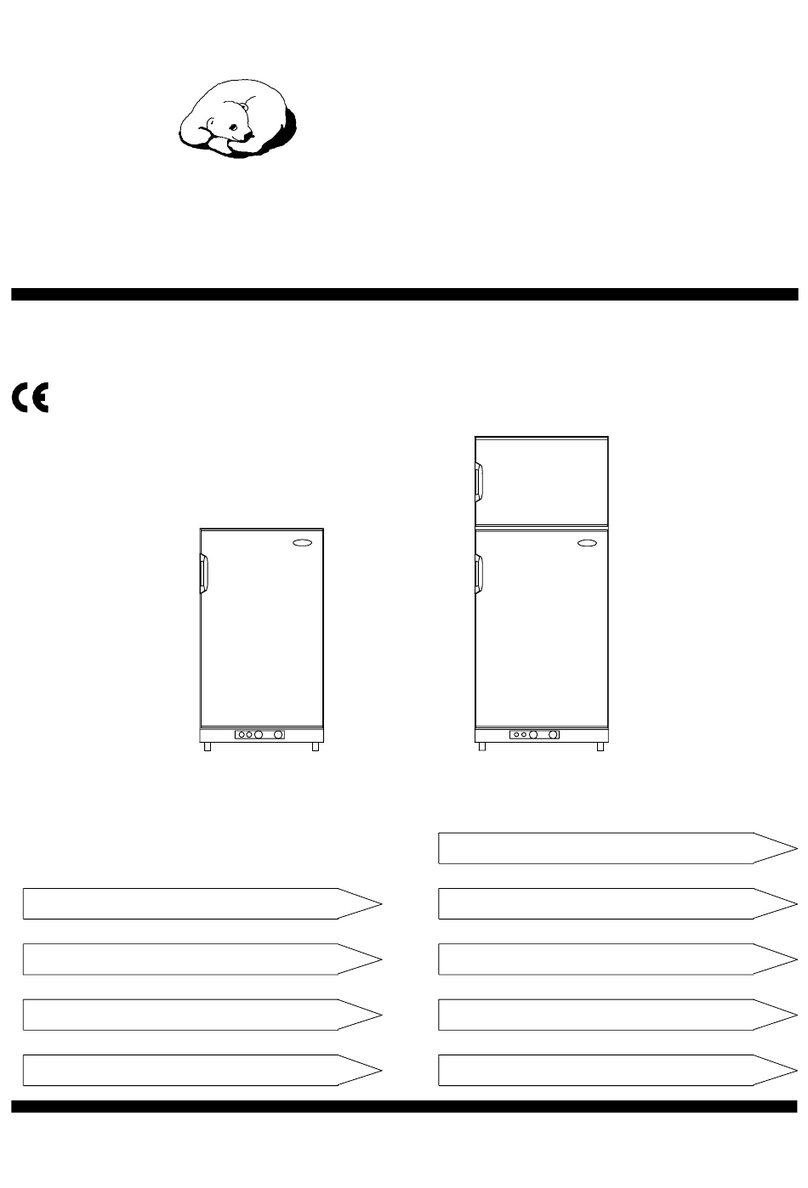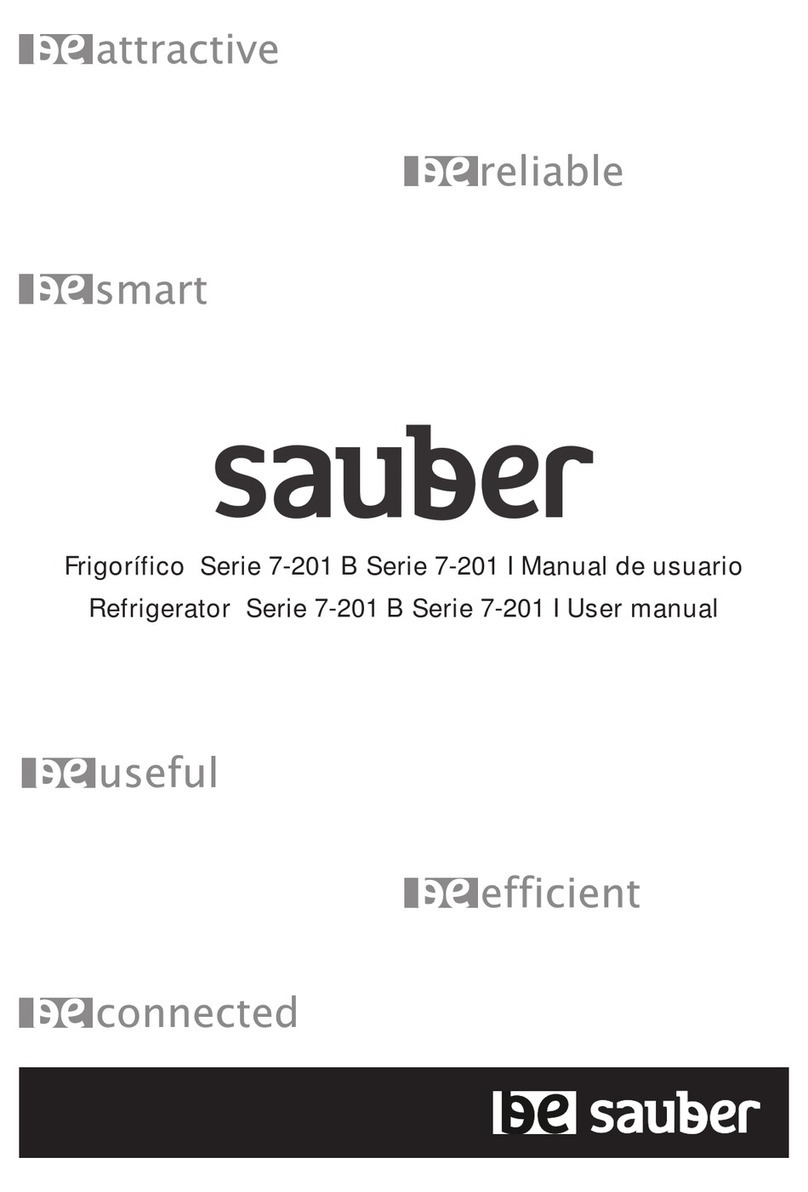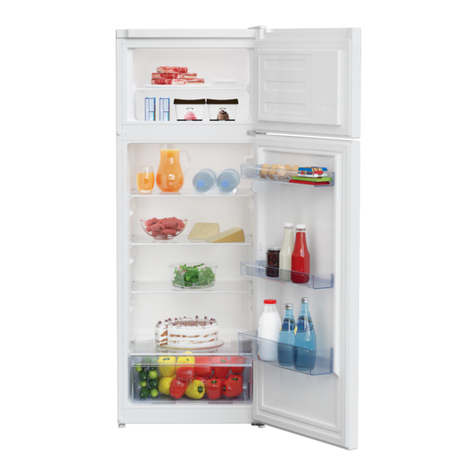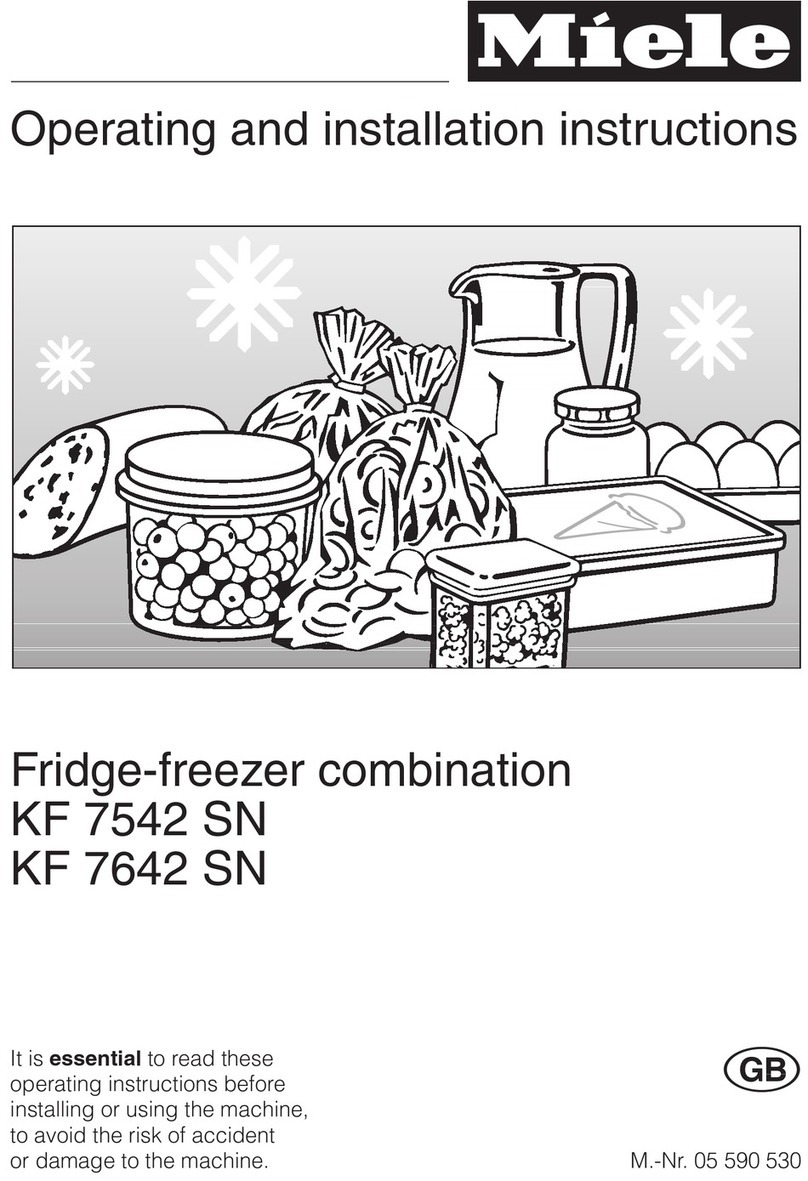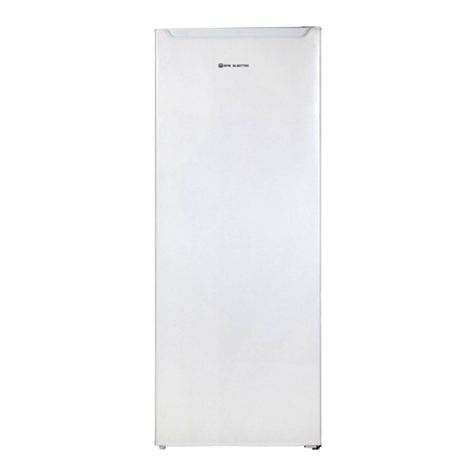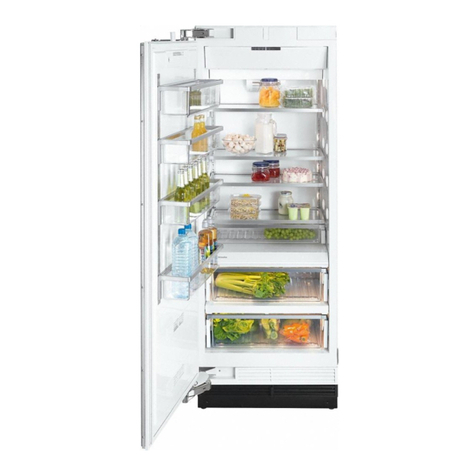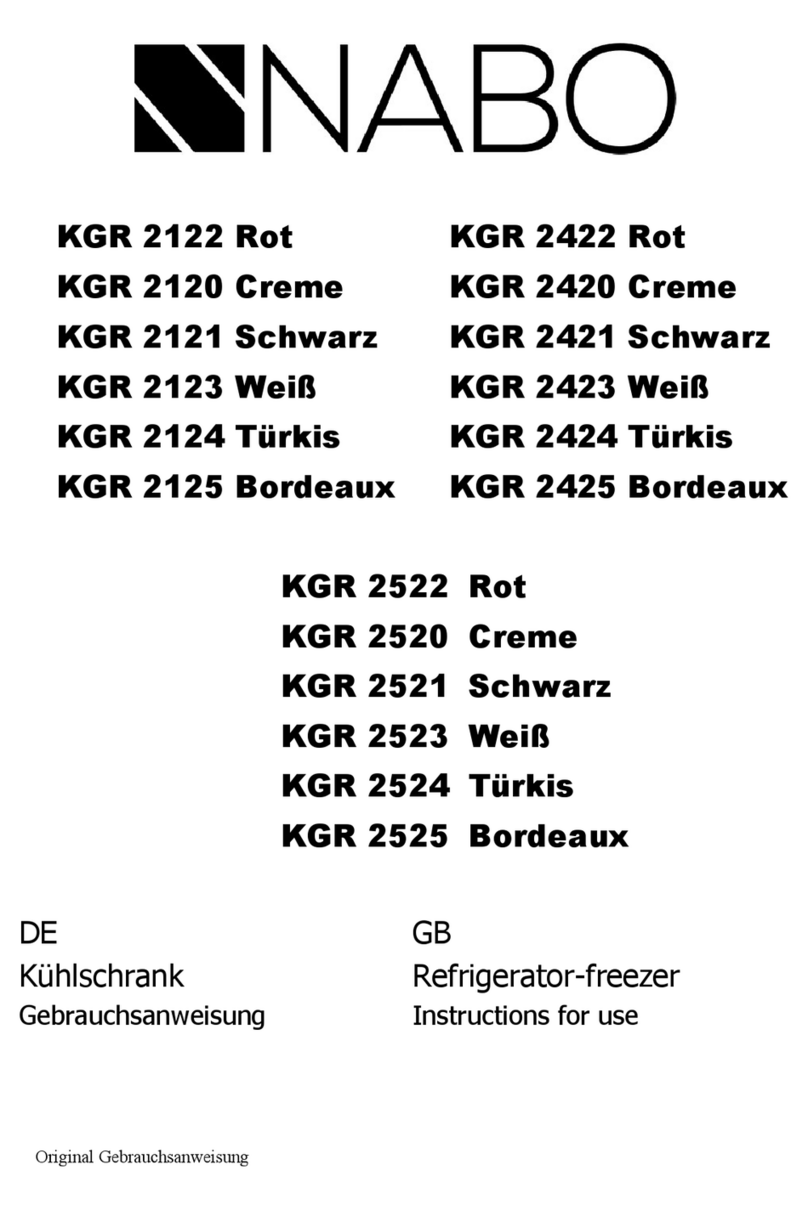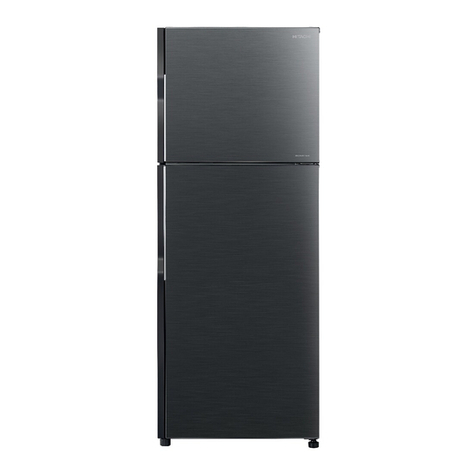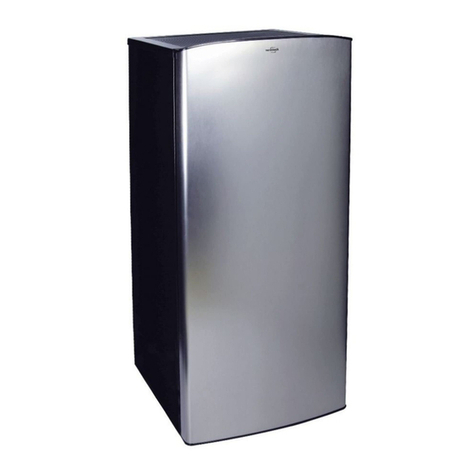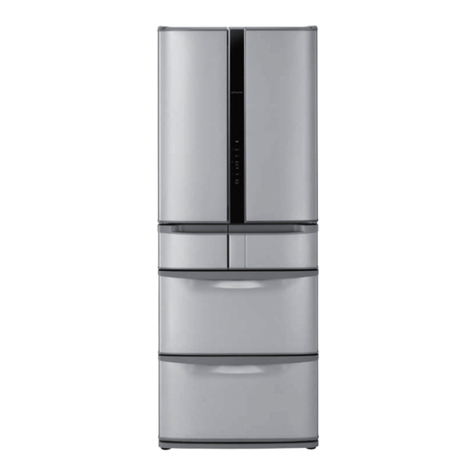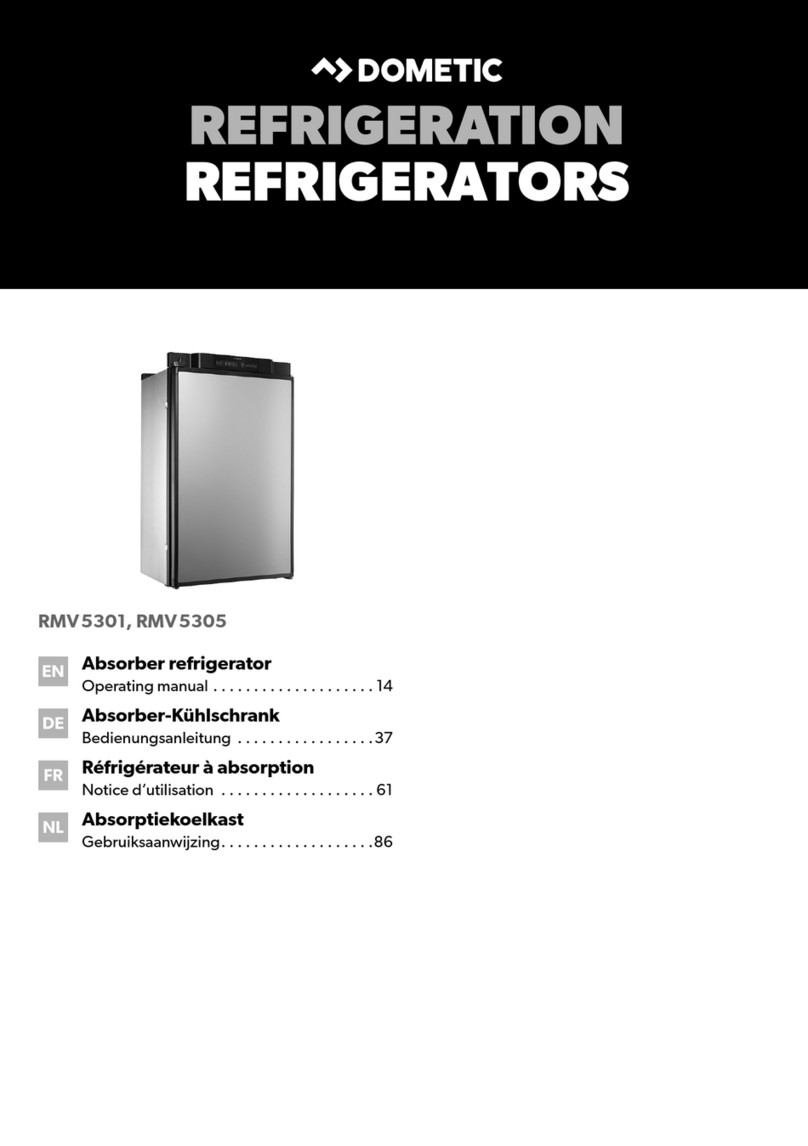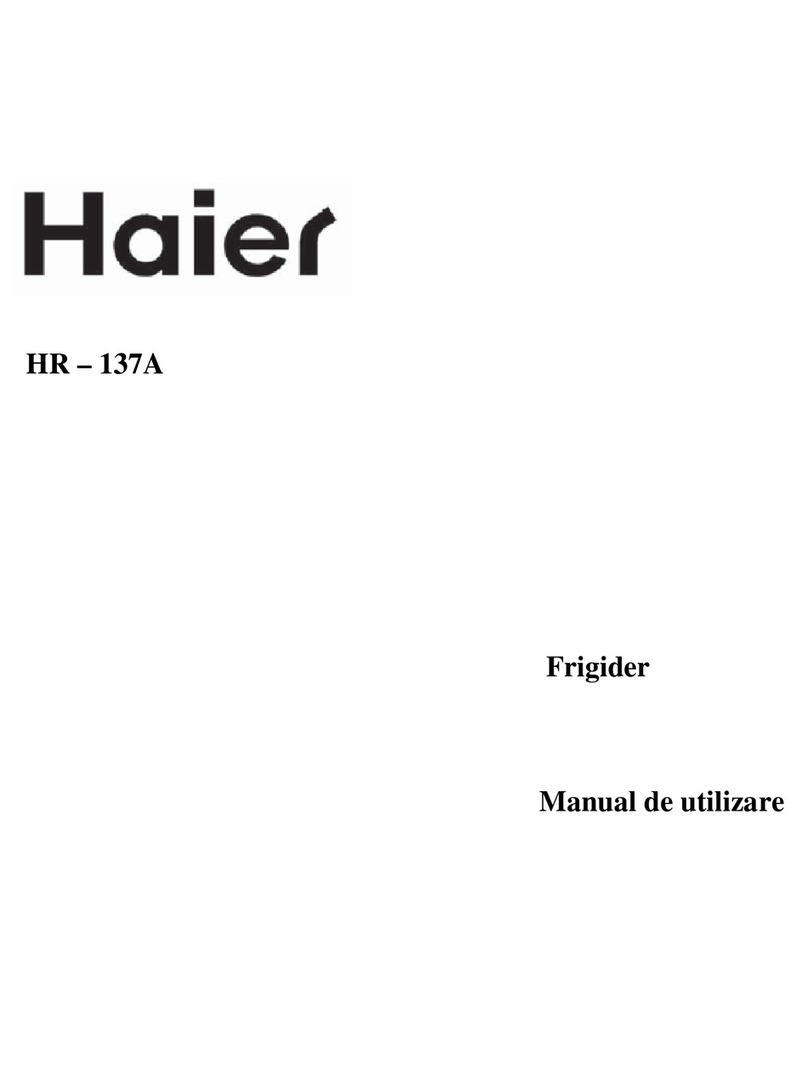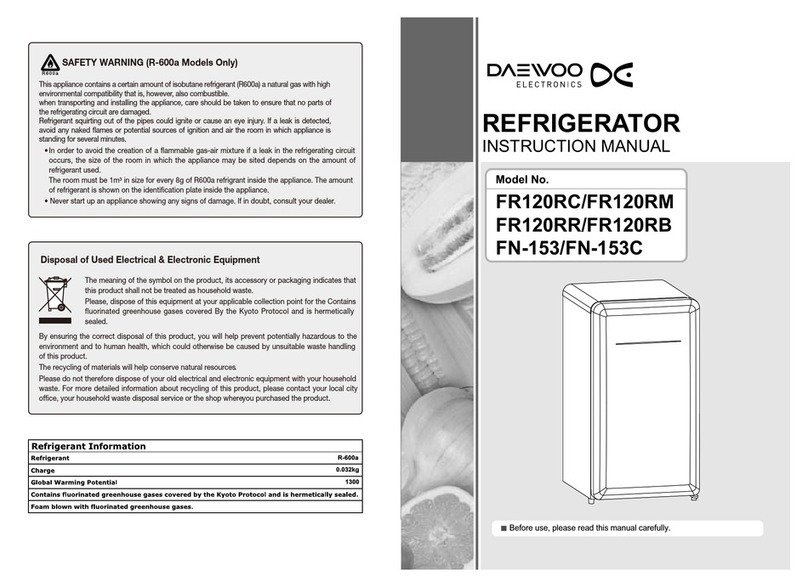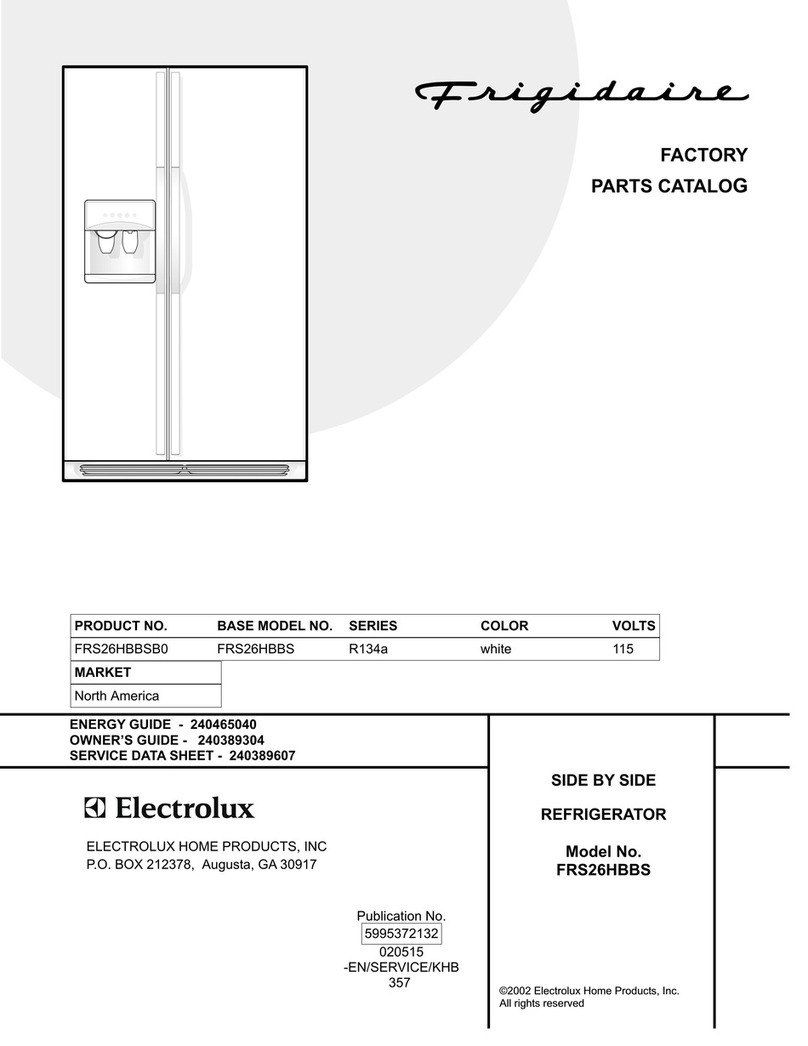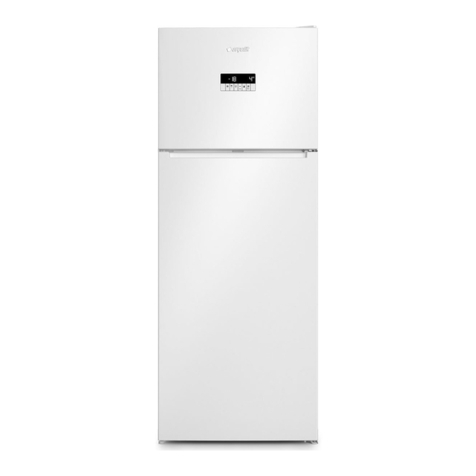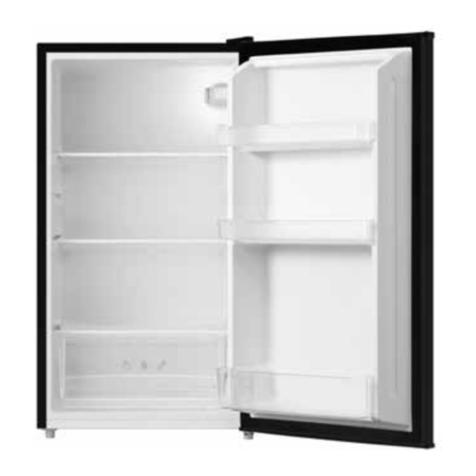Sibir V110KE Instruction Manual

www.sibir.com COPYRIGHT © SIBIR INTERNATIONAL
SIBIR REFRIGERATOR USER HANDBOOK
This drawing shows the back of a kerosene model refrigerator. Before using this handbook make sure
that the refrigerator in your care looks like the drawing above (i.e. models V110KE or V170KE).
KEROSENE/ELECTRIC
REFRIGERATOR
www.sibir.com
Visit our website for more information
on our products, to download material
and to contact Sibir International.
!

www.sibir.com COPYRIGHT © SIBIR INTERNATIONAL
Action on receipt
Installation
Refrigerators parts
Preparation before lighting [1]
Lighting Aladdin burner – Blue Flame
Lighting Kosmos burner – Yellow Flame
Regulating the temperature, Aladdin burner – Blue Flame
Day/night regulator
Regulating the temperature, Kosmos burner – Yellow Flame
Day/night regulator
Starting the refrigerator using electricity
Regulating the temperature – Electrical Operation
Daily operational actions – Kerosene Operation
Weekly operational actions – Kerosene Operation
Monthly operational actions – Kerosene Operation
Daily operational actions – Electrical Operation
Weekly operational actions – Electrical Operation
Monthly operational actions – Electrical Operation
Checking the door seal
Defrosting
Cleaning and trimming the wick – Aladdin Burner
Cleaning and trimming the wick – Kosmos Burner
Cleaning the chimney system
Cleaning the tank
Cleaning the refrigerator
Cleaning the Aladdin burner
Cleaning the Kosmos burner
Replacing the wick – Aladdin Burner
Replacing the wick – Kosmos Burner
Checking the thermostat and heater
Replacing the thermostat
Replacing the heater
Replacing the cooling unit
Ordering spare parts
Kerosene Operation: Refrigerator not cooling at all
Kerosene Operation: Refrigerator too cold
Kerosene Operation: Refrigerator not cold enough
Kerosene Operation: Aladdin Burner – Blue Flame
Kerosene Operation: Kosmos Burner – Yellow Flame
Electrical Operation: Refrigerator not cooling at all
Electrical Operation: Refrigerator not cold enough
Electrical Operation: Refrigerator too cold
CONTENTS 2
3
3
4
5
8
10
12
12
13
13
14
14
15
15
16
17
17
17
18
18
19
20
21
21
22
23
24
25
28
31
32
33
34
37
38
38
39
40
41
42
43
44
OPERATIONAL ACTIONS
Review this section to ensure that
your refrigerator is maintained in
best possible working condition.
TROUBLESHOOTING CHARTS
Review this section when you
are experiencing operational
problems with your refrigerator.
Please use the troubleshooting charts (at the
end of this handbook) to define your problem,
and from there find out which page to study.
!

www.sibir.com COPYRIGHT © SIBIR INTERNATIONAL
Place the refrigerator in the coldest possible place
inside a building. The refrigerator is tested to operate
reliably in temperatures up to 43°C.
The room must be ventilated and free air circulation
around the refrigerator is necessary.
Keep the refrigerator in the shade and away from heat
of any kind.
Avoid draughts, such as door and window openings.
Clearances to wall must be at least 30 mm and to roof
at least 400 mm.
Check that the door seals properly against the cabi-
net. See page 18.
If electricity is used, check that the voltage is correct.
30 mm
ACTION ON RECEIPT 3
Check the packing case for damages. In case you suspect any refrigerator damages, notify your supplier
before unpacking.
Unpack the refrigerator carefully.
Check the refrigerator. If it is damaged, notify your supplier.
Check that the flue baffle is hanging inside the chimney, see page 4.
Read the operating instructions in the manual or this handbook and follow them exactly.
INSTALLATION
400 mm
1
2
3
4
5
1
2
3
4
6
7
5
5

www.sibir.com COPYRIGHT © SIBIR INTERNATIONAL
REFRIGERATORS PARTS 4
Hinge Door gasket
Shelf
Temperature display sensor
Stabilizer tank
Cooling element
Control knob Condensor
Chimney (inside)
Cooling unit
Flue baffle
Burner
Guide pin
Tank lid
Rail
Lever Arm
Day/night reulator
Capillary tube
Electrical parts
Control knob
Thermostat
Heater
Terminal
Electrical cable
Electrical parts

www.sibir.com COPYRIGHT © SIBIR INTERNATIONAL
The kerosene tank is pulled out from the rear.
Release the lever arm.
Pull out the tank.
Check that the tank moves smoothly on the rails.
Remove the tank and flush it with clean kerosene.
PREPARATION BEFORE LIGHTING [1] 5
3
4
1 2
1
2

www.sibir.com COPYRIGHT © SIBIR INTERNATIONAL
Unpack the burner.
Remove the wick cleaner, if any, and put it aside.
Unpack burner glass, sealing ring and fit them to the burner.
Fit the burner into the tank. When fitting the Kosmos burner use a tank adapter.
Fit the control shaft on the tank to the wick turner.
PREPARATION BEFORE LIGHTING [2] 6
5
6
7
8
9
Aladdin burner, page 8
Sealing ring
Glass
Cleaner
Burner
Wick Turner
Kosmos burner, page 10

www.sibir.com COPYRIGHT © SIBIR INTERNATIONAL
Fill the tank with the best quality household kerosene. The level indicator shows the kerosene level.
Wipe the tank dry from kerosene if any has spilt.
Allow the burner to soak for at least 2 hours before lighting.
PREPARATION BEFORE LIGHTING [3] 7
10
11
To speed up the soaking, the burner could be
taken out, the wick turned up and placed up side
down into a bowl of kerosene for 15 minutes.
13
13
!

www.sibir.com COPYRIGHT © SIBIR INTERNATIONAL
Remove the gallery together with the lamp glass and sealing ring by turning it anti-clockwise.
Adjust the wick to a height you can see, about 2–3 mm (1/8 inch).
Light the wick and allow the flame to travel around the wick.
Replace the gallery together with the lamp glass and sealing ring by turning it clockwise.
Turn the flame down to the smallest possible flame.
Gallery
LIGHTING ALADDIN BURNER – BLUE FLAME [1] 8
2
4
Low flame
5
1
3
5
3
1

www.sibir.com COPYRIGHT © SIBIR INTERNATIONAL
Push the tank into the tank holder underneath the cabinet at the rear of the refrigerator. Slide the tank
carefully forwards against the guide pin.
Carefully lift the tank by means of the lever arm and check that the guide pin enters the hole in the
bracket on the left side of the burner.
Make sure that the sealing ring seals properly against the chimney. There must be no gap between the
chimney and the sealing ring.
Adjust the flame to medium flame, see page 12, and leave the refrigerator running for 3–4 hours.
For further adjustment, see page 12.
LIGHTING ALADDIN BURNER – BLUE FLAME [2] 9
9
10
Sealed
Not sealed
· Never let the flame burn yellow or with yellow streaks. If it does, see page 40 point 3.
· Never turn the flame to maximum until the chimney has been heated for 3–4 hours.
· First time using the refrigerator, smoke will appear due to paint residues in the chimney.
Guide pin
6
7
8
8
Sealing
ring
Sealing
ring
Lever arm
Lever arm
6
7
8
!

www.sibir.com COPYRIGHT © SIBIR INTERNATIONAL
Wick guide
LIGHTING KOSMOS BURNER – YELLOW FLAME [1] 10
2
Remove the lamp glass with its sealing ring (pull carefully upwards).
Adjust the wick to about 1 mm (1/32 inch) above the wick guide.
Light the wick and allow the flame to travel around the wick.
Turn the flame very low. It should now be even. If it is not, the wick should
be pressed down where the flame is high. Usa a wire or screwdriver.
Very low flame
41
3 4
1
3
4

www.sibir.com COPYRIGHT © SIBIR INTERNATIONAL
LIGHTING KOSMOS BURNER – YELLOW FLAME [2] 11
Replace the lamp glass with insert carefully.
Push the tank into the tank holder underneath the cabinet at the rear of the refrigerator. Slide the tank
carefully forwards against the guide pin.
Carefully lift the tank by means of the lever arm and check that the guide pin enters the hole in the
bracket on the left side of the burner.
Make sure that the sealing ring seals properly against the chimney. There must be no gap between the
chimney and the sealing ring.
Adjust the flame to medium flame, see page 13, and leave the refrigerator running for 3–4 hours.
For further adjustment, see page 13.
5
9
10
· Never let the flame get smoky. If it does, turn down the flame.
· Never turn the flame to maximum until the chimney has been heated for 3–4 hours.
· First time using the refrigerator, smoke will appear due to paint residues in the chimney.
Guide pin
Sealed
Not sealed
Guide pin
6
7
8
8
Sealing
ring
Sealing
ring
Lever arm
Lever arm
6
7
8
!

www.sibir.com COPYRIGHT © SIBIR INTERNATIONAL
For good temperature control, the burner should be lit constantly. The refrigerator temperature depends
on the flame size. It is regulated by the control knob.
High flame gives a colder refrigerator. Low flame gives a warmer refrigerator.
REGULATING THE TEMPERATURE, ALADDIN BURNER – BLUE FLAME 12
1
2
Low Medium Maximum (high)
In low ambient temperature (for example
at night in some climates) the refrigerator
may be too cold. By moving the lever (at
the top of the refrigerator) to the “moon”
position, the flue baffle inside the chim-
ney will be lifted up about 320 mm (1 1⁄2
inches), which reduces the efficiency of
the cooling unit. During day, when it is
hot, the lever should be moved to the
“sun” position. The flue baffle will return
to normal and the refrigerator will ope-
rate normally.
DAY/NIGHT REGULATOR

www.sibir.com COPYRIGHT © SIBIR INTERNATIONAL
In low ambient temperature (for example
at night in some climates) the refrigerator
may be too cold. By moving the lever (at
the top of the refrigerator) to the “moon”
position, the flue baffle inside the chim-
ney will be lifted up about 320 mm (1 1⁄2
inches), which reduces the efficiency of
the cooling unit. During day, when it is
hot, the lever should be moved to the
“sun” position. The flue baffle will return
to normal and the refrigerator will ope-
rate normally.
Very low
REGULATING THE TEMPERATURE, KOSMOS BURNER – YELLOW FLAME 13
DAY/NIGHT REGULATOR
Low Medium Maximum (high)
For good temperature control, the burner should be lit constantly. The refrigerator temperature depends
on the flame size. It is regulated by the control knob.
High flame gives a colder refrigerator. Low flame gives a warmer refrigerator.
1
2

www.sibir.com COPYRIGHT © SIBIR INTERNATIONAL
Check that the voltage is correct.
If lit, turn off the burner flame.
Plug in the power supply cable.
Turn the control knob to a medium position and leave the refrigerator on for 3–4 hours.
Check the inside temperature and adjust the control knob if necessary, see below.
STARTING THE REFRIGERATOR USING ELECTRICITY 14
REGULATING THE TEMPERATURE – ELECTRICAL OPERATION
After checking the inside temperature, the control knob can be turned towards a warmer or colder posi-
tion. Any suitable position between No “1” and “MAX” could be used.
This knob is graduated from 0 (marked by a spot) to figure 7 and MAX position where the cabinet is set
for continual operation, i.e. the thermostat is by-passed. Refrigerator temperature is controlled by the
thermostat only when running on electricity. When running on kerosene, the temperature is controlled by
means of the knob on the front of the refrigerator.
1
2
3
4
5
· The kerosene burner must never be lit when electricity is used.
· First time the refrigerator is used, smoke will appear due to paint residues in the heater tube.
!

www.sibir.com COPYRIGHT © SIBIR INTERNATIONAL
To regulate the temperature see pages 12 or 13. If necessary, study the troubleshooting charts at the
end of this handbook.
Check that the burner flame is normal, see pages 11 to 13.
Check kerosene level. Refill if necessary with kerosene of good quality.
Check the frost formation on the cooling element.
If the ice is thicker than 6–10 mm (1/4–3/8 inch)
defrosting should take place, see page 18.
Check that the kerosene in the tank is clean. For
cleaning the tank see page 21.
Check that the wick and its tails are clean. A dirty
wick will give a smoky flame. For cleaning and trim-
ming the wick see pages 19 or 20.
Frost forming rapidly (in just a few days) could
be result of poor door sealing, see page 18.
DAILY OPERATIONAL ACTIONS – KEROSENE OPERATION 15
1
2
3
WEEKLY OPERATIONAL ACTIONS – KEROSENE OPERATION [1]
1
2
3
!

www.sibir.com COPYRIGHT © SIBIR INTERNATIONAL
Clean the burner, see page 23 or 24.
Clean the chimney, see page 21.
Clean the flue baffle.
WEEKLY OPERATIONAL ACTIONS – KEROSENE OPERATION [2] 16
4
5
Check that the condenser and cooling unit are free
from dust.
Check the outer cabinet for paint damage. Repaint
if necessary.
When necessary:
· Clean the refrigerator in and outside with
a damp cloth. Use mild detergent only!
· Clean door gasket.
MONTHLY OPERATIONAL ACTIONS – KEROSENE OPERATION
2
Wet cloth
6 6
1
1
!

www.sibir.com COPYRIGHT © SIBIR INTERNATIONAL
Check the temperature inside the refrigerator. To regulate the temperature see page 14.
If still necessary, see the troubleshooting charts at the end of this handbook.
Check the frost formation on the cooling element.
If the ice is thicker than 6–10 mm (1/4–3/8 inch)
defrosting should take place, see page 18.
Frost forming rapidly (in just a few days) could
be result of poor door sealing, see page 18.
DAILY OPERATIONAL ACTIONS – ELECTRICAL OPERATION 17
WEEKLY OPERATIONAL ACTIONS – ELECTRICAL OPERATION
Check that the condenser and cooling unit are free
from dust.
Check the outer cabinet for paint damage. Repaint
if necessary.
When necessary:
· Clean the refrigerator in and outside with
a damp cloth. Use mild detergent only!
· Clean door gasket.
MONTHLY OPERATIONAL ACTIONS – ELECTRICAL OPERATION
2
1
1
!
!

www.sibir.com COPYRIGHT © SIBIR INTERNATIONAL
Place a thin paper strip against the cabinet front.
Close the door.
Pull the paper strip, if it moves easily or falls away by itself:
· Find the place where the rubber gasket doesn’t seal tightly, then …
· Place a pad of paper or sticking plaster between the rubber gasket and the inside of the door.
In order to make the gasket seal tightly.
If you can not make the door seal tightly, order a new door, see page 37.
CHECKING THE DOOR SEAL 18
· Check all the way around the door.
· Pay particular attention to the corners.
3
4
Move the vaccine to another refrigerator if available or
store it in a coolbox with ice packs.
Blow out the flame or pull the plug from the wall socket and
leave the door and the freezer compartment shutter open.
Remove ice with your fingers, as soon as it is possible
to do so. Do not use knives or sharp instruments!
Empty the drip tray.
Wipe the freezer compartment and cooling element dry.
Clean the refrigerator inside. Use mild detergent only.
Start the refrigerator on kerosene or electricity.
DEFROSTING
· Defrosting is to be carried out as quickly as possible in order not to damage the vaccine.
· Use the time it will take to defrost to clean the refrigerator etc.
· Wait until the vaccine compartment is cold before replacing the vaccine.
1
2
3
4
5
6
7
It is normal that frost forms on the cooling element. A thin layer of frost does not affect the cooling
performance. A thick layer of frost (6–10 mm or 1/4–3/8 inch or more) must be removed by defrosting.
1 2
1
2!
!

www.sibir.com COPYRIGHT © SIBIR INTERNATIONAL
For removal of the tank see page 5.
Remove the gallery. Turn it anti-clockwise and lift, see page 23.
Take out the flame spreader.
Insert the wick cleaner (supplied with the burner) in the burner tube.
Adjust the wick to press gently against the wick cleaner.
Turn the wick cleaner carefully clockwise.
If the wick cleaner is missing, use a razor
blade or a pair of scissors.
The top surface of a perfectly cleaned wick
should be even and free from carbon and frays.
Blow the wick and burner clean.
Assemble the burner and fit into the tank.
Flame
spreader
CLEANING AND TRIMMING THE WICK – ALADDIN BURNER 19
1
2
4
5
7
8
9
10
· Do not fray the wick.
· Do not cut away more than necessary.
3
6
3
6
!

www.sibir.com COPYRIGHT © SIBIR INTERNATIONAL
For removal of the tank see page 5.
Remove the lamp glass with insert, see page 24.
Clean the wick surface with your fingers in order to get it even and free from carbon.
If not possible to use fingers, trim with a razor blade.
Blow the wick and burner clean.
Assemble the burner and fit it into the tank.
Not even
CLEANING AND TRIMMING THE WICK – KOSMOS BURNER 20
1
2
4
5
6
Even
3
3
3
This manual suits for next models
1
Table of contents
Other Sibir Refrigerator manuals

